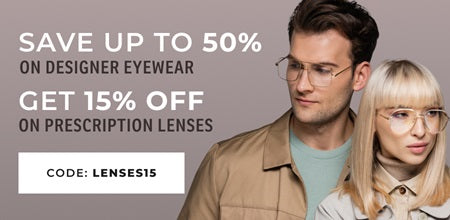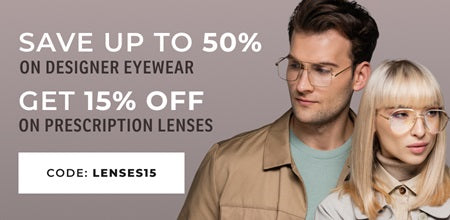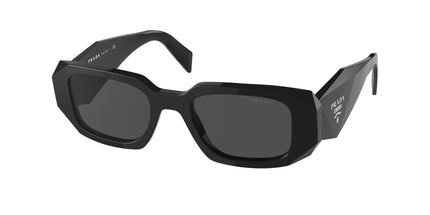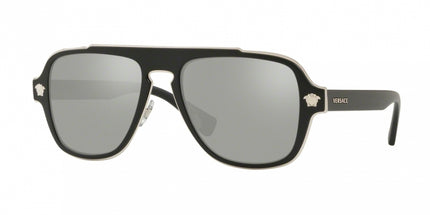4 Eye Diseases Caused By Sun Damage (How To Protect Your Eyes!)
Many of us understand the importance of applying sunscreen on the skin to protect from the damage the sun can cause. Unfortunately, not most of us know how important eye protection is.
Our eyes are the critical body part that brings our world to life and fills it with colors. This wouldn’t be possible if the light weren’t entering our eyes. After the light gets refracted and focused into a particular spot in the retina of our eye, we wouldn’t be able to see.
However, UVA (Ultraviolet A) and UVB (Ultraviolet B) light can cause significant damage to your eyes if not properly guarded and taken care of. But doing that is challenging because the main source of UV exposure comes from the sun.
The Vision Council revealed that only 31% of US citizens take proper measures to protect their eyes with sunglasses or other UV-protective eyewear. The study also revealed that people buy sunglasses based on their comfort level and style rather than checking if it provides the right protection from UVA or UVB.
Here are the most common eye diseases caused by sun exposure and what preventative measures you can take to avoid them:

Common Types of UV and Sun-related Eye Diseases
Did you know that UV damage can start as soon as 15 minutes of exposure to the sun? Well, now you know! The Vision Council's extensive study highlighted that the following diseases could affect the population with long-term effects:
- Skin cancer (51%)
- Sunburn (42%)
- Sunburned eyes (31%)
- Cataracts (26%)
The short-term effects include:
- Bloodshot eyes
- Swelling
- Hypersensitivity to light
- Irritation
- Blurred vision
1. Skin Cancer on Eyelids and Around the Eyes
Regular exposure to ultraviolet rays is responsible for skin aging. The results may not be visible within days, but over time you will find new wrinkles, sun spots, and loose skin around your eyes.
Moreover, your eyelids become vulnerable to harsh UV radiation without proper eye care or sunglasses. UV radiation can burn delicate skin due to overexposure or increase the chances of developing skin cancer around the eyes.
These varying degrees of skin cancer can include cancer conditions like:
- Basal cell carcinoma
- Squamous cell carcinoma
- Melanoma
The symptoms of eye cancer include:
- Lump or bump on the eyelid that doesn’t heal properly or keeps bleeding
- Lesion or sudden eyelashes loss
- Inflammation of the eyelids
2. Cataracts
Cataracts cause clouding of the vision and the lens present in the eyes. According to research, UVB light is the main factor that contributes directly to cataract development. Treating cataracts means undergoing surgery to remove the affected lens with an artificial lens. A good pair of sunglasses with 100% UV-blocking tech can protect and save your eyes from this common eye disease.
3. Pterygia and Pinguecula
Pterygia or pinguecula are the growth formation on the whites of your eyes (sclera) caused by over-sun exposure. A pterygium can potentially spread onto the cornea and affect the vision. These growths may irritate, which can be reduced by a prescribed topical lubricant. However, wearing proper UV-blocking glasses is the best way to protect your eyes from these topical growths.
4. Corneal Sunburn (Photokeratitis)
The cornea makes the clear outer covering of the eye and is sometimes referred to as the skin of the eye. Just like typical skin sunburn, the cornea can face sunburn as well. This eye disease is called photokeratitis.
It causes painful corneal inflammation due to unfiltered UV radiation exposure. Like other sun-exposed conditions, wearing proper UV Sunwear can prevent your eyes from this disease.
Other Ways to Protect Your Eyes from the Sun
Other than wearing UV-protective sunglasses, here are a few different ways you can protect your eyes from the sun:
1. Tan as Less as Possible
Tanning means sitting under the sun or tanning bed for hours and overexposing your skin and eyes to UV radiation. Subjecting yourself to purposeful exposure can cause long-term damage to your eyes and skin, especially if you aren’t wearing protective sunglasses or eyewear.
2. Stay Under the Sun Minimally
Spend as less time under the sun as possible. This doesn’t mean eliminating your outdoor activities. Instead, you must take indoor or under-the-shade breaks whenever you’re under the sun for longer.
Conclusion
Eye protection is everything. Eliminating the chances of vision loss can be made possible with 100% UV protection or UV400 protection sunglasses. This doesn’t mean you should stop wearing a hat or spend more hours under the sun. Taking preventative measures along with sunglasses is the right way to go.















 Back to Blog Page
Back to Blog Page











